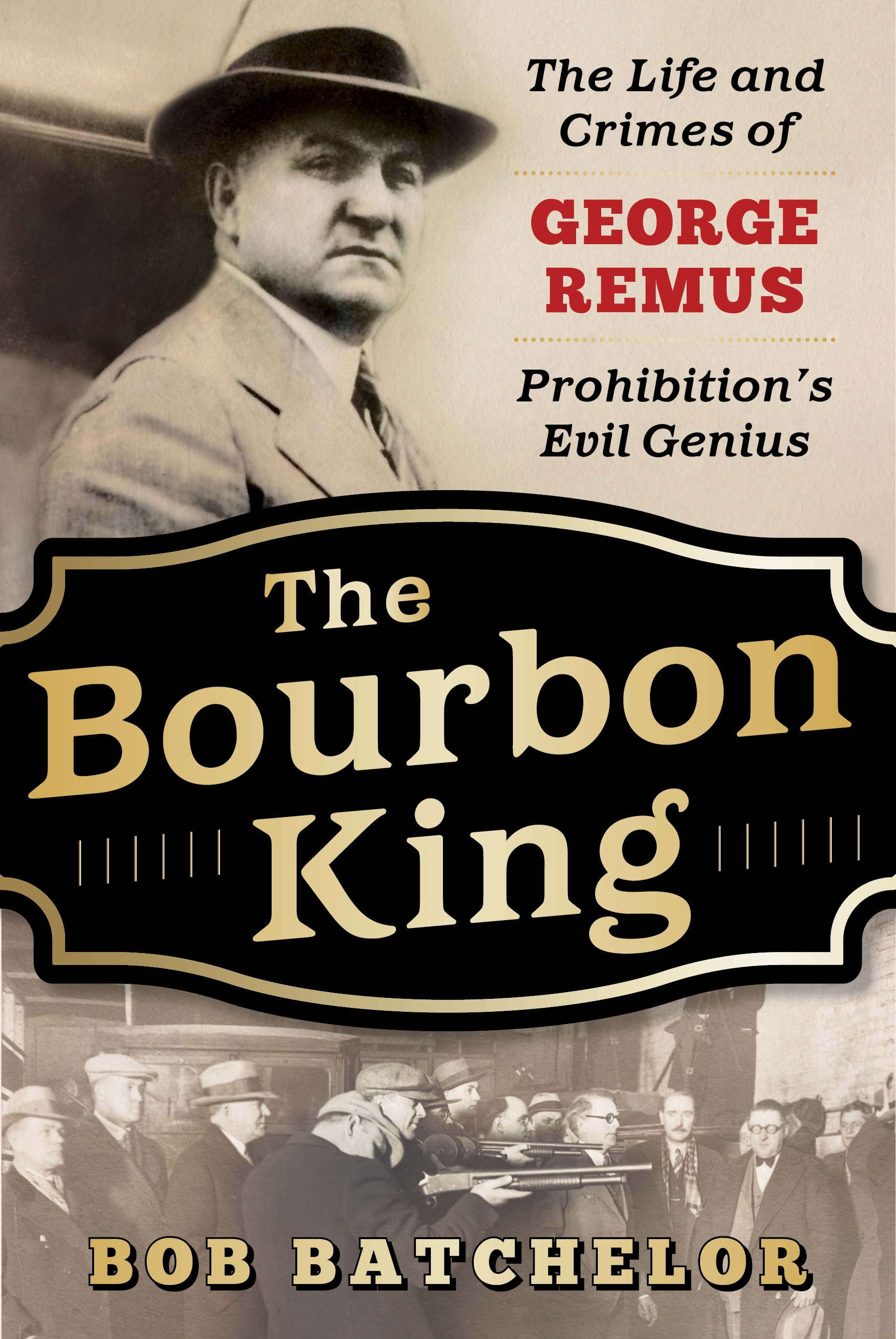The Bourbon King: The Life and Crimes of George Remus, Prohibition’s Evil Genius is the epic tale of 1920s “Bootleg King” George Remus, one of the greatest criminal masterminds in American history.
You can order a signed and personalized copy of The Bourbon King via www.bobbatchelor.com/store.
Overview
Prohibition didn’t stop George Remus from cornering the boozy, illegal liquor marketplace and amassing a fortune that is rumored to have eclipsed $200 million (the equivalent of $5 billion today.) As eminent documentarian Ken Burns proclaimed, “Remus was to bootlegging what Rockefeller was to oil.”
Author Bob Batchelor has unearthed a treasure trove of untapped historical archives to cover the life, times, and crimes of the man who ran the largest bootlegging operation in America—larger and more powerful than that of Al Capone—and a man who was considered the best criminal defense lawyer of his era.
Remus bought an empire of distilleries on what is now The Bourbon Trail and used his other profession, as a pharmacist, to profit from loopholes in the law. He spent millions bribing government officials in the Harding Administration, directly tied to Attorney General Harry Daugherty and Harding’s “Ohio Gang.” And he created a roaring, opulent lifestyle that epitomized the Jazz Age over which he ruled. So extravagant was this Bourbon King’s lifestyle that his lush parties served as an inspiration for The Great Gatsby.
But Remus came crashing down in one of the most sensational murder cases in American history. After serving a brief prison sentence, he was driven mad by his cheating wife Imogene and Franklin Dodge, the G-man who not only put him in jail, but also seduced her before stealing all his riches. Remus murdered his wife in cold-blood, setting loose the most media-saturated trial of the Jazz Age. Claiming a condition that he invented – temporary maniacal insanity – Remus took on Charles Taft, son of former President and current Chief Justice William Howard Taft, in a trial that grabbed national headlines. Remus won over the star-struck jury with lurid allegations about his lost millions at the hands of his two-timing wife and the federal agent who stole her away.
Love, murder, mountains of cash, bribery, political intrigue, rivers of bourbon, and a grand spectacle like few before it, the tale of George Remus transcends the era and provides readers with a lens into the dark heart of Prohibition’s Bourbon Trail, the thirst of the American people, and their fascination with crime.











